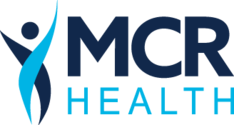Did you know that the Centers for Disease Control and Prevention (CDC) cites heart disease as the leading cause of death in the United States? Heart attacks and strokes are well known, but there are other diseases that go untreated. One such disease is orthostatic hypertension.
In this article, you will learn all about orthostatic hypertension including, the symptoms, risk factors, and also give some ways to improve blood pressure readings.
What Is Orthostatic Hypertension?
The Mayo Clinic describes orthostatic hypertension as a type of low blood pressure that happens when sitting or lying down, then increases upon standing, causing a sensation of lightheadedness. A person with orthostatic hypertension can also sometimes faint as a result.
This condition can often be acute, meaning there are simple explanations like dehydration or prolonged bed rest. In most cases, this isn’t any cause for alarm, as it passes after a bit.
However, some people experience repeated episodes, which can indicate another medical condition. If patients are concerned, they should seek medical treatment for more evaluation in order to determine if a heart condition is the cause of the persistent episodes of lightheadedness.
The diagnosis of a heart condition can be scary, however, there are several symptoms that are associated with orthostatic hypertension.
Symptoms of Orthostatic Hypertension
The American Heart Association lists a few common symptoms of low blood pressure.
- Dizziness
- Lightheadedness
- Blurred vision
- Weakness
- Cold, clammy, pale skin
- Rapid, shallow breathing
- Fatigue
- Depression
- Fatigue
- Headache
If these symptoms occur only occasionally, there is often no need to worry. But for patients who experience these symptoms frequently, a medical evaluation is recommended to determine whether low blood pressure is to blame.
Thankfully, there are several known associated risk factors that may increase an individual’s risk of developing orthostatic hypertension.
Risk Factors
The Mayo Clinic outlines several risk factors that have been known to increase the chance of orthostatic hypertension developing in some people:
- Age: The condition is more common in adults over the age of 65. As a result of aging. As people get older sometimes medication for conditions can be needed to treat another condition.
- Medication: Certain medications may cause low blood pressure as a side effect while working to help provide treatment for another condition.
- Certain diseases: Some diseases likeheart valve problems, heart attack, and heart failure; certain nervous system disorders, such as Parkinson’s disease can develop orthostatic hypertension.
- Heat exposure: Sweating can lead to dehydration, which results in a drop in blood pressure. Although sweating is normal, it is important for the body to remain hydrated and return to normal as soon as possible. Another harmless action to be mindful of is prolonged resting.
- Laying in bed: Prolonged rest can change blood pressure, and standing up suddenly can result in lightheadedness. For those who are unwell, bed rest may be beneficial. Expectant mothers, for example, may feel inclined to spend more time resting.
- Pregnancy: The circulatory system expands causing the volume of blood to shift, changing blood pressure. However, after birth, blood pressure often returns to normal. Pregnancy lasts several months. One condition that can last over 9 months and lead to other health complications is drinking.
- Alcohol: Consumption of alcohol can increase the risk of developing orthostatic hypertension.
If these risk factors are present together with symptoms of orthostatic hypertension, patients should consult a cardiologist immediately.
MedlinePlus states the condition of orthostatic hypertension appears in 6% of the United States population. This makes the condition a lesser-known disease that can lead to further complications down the line.
Possible Complications
There are several complications associated with persistent episodes of orthostatic hypertension. Mayo Clinic lists three possible complications:
- Increased risk of strokes later
- Higher chance of falls or fainting
- Increased risk of developing other cardiovascular diseases such as heart failure
These complications may also cause other cardiovascular diseases because regulation of blood volume will affect other body systems. For example, the US National Library of Medicine National Institutes of Health cites blood pressure helps the nervous system and its sympathetic arm, irregular blood pressure can impact how well the body functions.
Regularly monitoring your blood pressure over time is an important step in establishing a normal range.
What is a healthy blood pressure range? We can answer that for you.
Blood Pressure Ranges
The American Heart Association recognizes five stages of blood pressure.
A blood pressure reading consists of two numbers, they are known as the systolic and the diastolic. Systolic pressure is the first number and diastolic is the second number. A reading of 120/80 mmHg, for example, is considered ideal. Since blood pressure can fluctuate, doctors look for any major changes to determine a pattern of readings over time. Additionally, if there is a dip of 20 mmHg or more in blood pressure, further testing or evaluation may be undertaken.
Normal: 120/80 mm Hg
Elevated: 120-129 systolic and less than 80 mm Hg diastolic
Hypertension stage 1: 130-139 systolic or 80-89 mm Hg diastolic
Hypertension stage 2: 140/90 mm Hg or higher
Hypertensive crisis: 180/120 mm Hg – Call 911
Because blood pressure plays such an essential role in overall body function, everyone can benefit from blood pressure monitoring! Several methods can be used to improve blood pressure.
Keeping Healthy Blood Pressure Tips
EverydayHealth has provided a few tips that can assist in blood pressure management.
- Exercise: Working out helps to stimulate the body to release nitric acid. Exercise can strengthen the heart muscles as this substance triggers the opening of blood vessels. Strengthening the heart is not the only muscle to keep in mind to stay healthy.
- Losing Extra Weight: Losing even a few pounds helps the body combat heart disease. One great way to lose additional weight is to eat the right food.
- Healthy Diet: Fruits, vegetables, whole grains, and fish are all great foods for heart health. Some healthy habits can help eliminate unhealthy habits such as smoking and drinking.
- Reduce Smoking and Drinking: Smoking and drinking are popular habits, but they can lead to the body being at a higher risk from regular consumption of alcohol or nicotine.
Even though these tips cannot prevent heart diseases completely, patients can take control of their own health by changing their lives.
Patients who are at risk for heart conditions and have concerns should consult a cardiologist for a detailed evaluation.
How We Can Help
At MCR Health, our cardiologists can help with the diagnosis and treatment of many heart conditions. Our team can help with orthostatic hypertension treatment! If you have orthostatic hypertension, we can help you! Schedule an appointment with our team!

